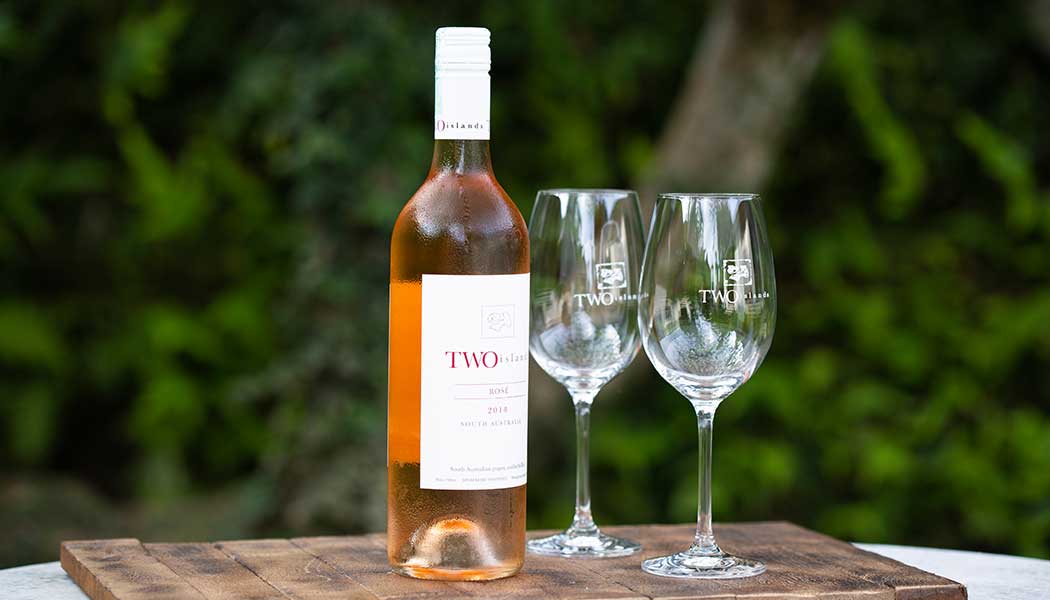Two Islands rosé joins the rose revolution as Ondy Sweeting talks to winemaker James Kelleske about this latest journey to the table. Image: Lucky 8.
Happy, smiling wine lovers across the globe love little more than to sip on a chilled glass of rosé from spring to the late, late summer.
As the wine world’s biggest juggernaut in recent history, the blush coloured drop has become an exulted libation.
In France the world’s most popular rosé – Chateau d’Esclans’ Whispering Angel is thought to release 3.2 million-bottle vintages yearly.
Having for relentless years being dismissed as ‘too French’, rosé is now here to stay and one Bali wine maker has tirelessly slogged it out for nearly 18 months to make a fresh and tasty batch especially for the local market.
Two Islands’ chief wine maker James Kelleske has a passion for the pink stuff.
“My affair with rosé has been around for at least 10 years. It was still unpopular to drink it back then, particularly among guys, but the French have been drinking it for years” he says.
Then I went to a rosé wine dinner at SIP in Seminyak and they had Chateau d’Esclans’ Whispering Angel and the Garrus Reserve.
“This unique rosé is produced in very few barrels from 80-year-old vines on top of a hill in Provence and it is considered to be among the great wines of the world with the possibility of joining the heavenly pantheon of La Tour, La Tâche, and Le Montrachet.
“The Garrus makes me almost cry when I drink it. That got me even more into rosé because of the match with the climate here,” says James.
Two Islands parent company Hatten already had a rosé for more than two decades.
“My original focus was to improve that and it was my baby and I’m proud of how it has developed from grapes grown in north Bali,” he says.
“But already the trend towards rosé was unstoppable and then as far back as five years ago, the requests were coming in for a new rosé as part of the Two Islands range. So we did a limited release. Halfway through that process our owner decided there was enough demand to take it commercial,” says James.
The Australian wine maker who grew up in in South Australia’s Barossa Valley went to work designing the wine.
“I decided on what style I’d like and to source the fruit as well as the technical process in collaboration with the sales team and what the market wanted.
“I love French Provencal wine. It is fresh and crisp with a light colour. With our rosé we went a bit unique because about 50 per cent of the blend is a pinot grigio, which gives the beautiful colour and is tanic and dry, giving the wine more structure rather than the traditional granache from Australia than can be flabby. Ours is only 50 per cent Grenache, which gives it the rose peal fruitiness that is light and soft,” he says.
Rosé is universally a wine that is best to drink at 18 months.
A locally produced wine with grapes from Australia’s exceptional South Australian vineyard bypasses the delays associated with importation. It is a long journey from a French wine house to shipping with oceans to cross and customs paper work, taxes, inspections and other red carpet to master. Often foreign rosé wines are past their best when they arrive at the table. They are infinitely drinkable – just not perfect.
“Like many whites, rosé doesn’t travel well so it is fantastic to feed the market with fresh wine,” James says.
The Two Islands Rosé was launched before Christmas and the response from the big beach and cliff clubs has been dramatic to the point of intimidating.
“They’ve almost scared us. I was tentative about how much to produce but it seems we should have made more. I don’t like to say no and we always want it to be available for those with us on the wine list. Next year we will definitely produce more rosé to satisfy the market.”
Hatten produces 1.5 million bottles a year and that is across 25 products, including the rosé. Next year, James is considering producing more than 50,000 bottles of the rosé and believes that the figures will continue to grow – and fast.
“One of my criteria for the rosé is the colour. People don’t usually pick wine by the colour but colour with rosé is important. I’m often sitting at the beach and I’ve seen a bottle of nice rosé go past and just the sight makes me really want some. I’ve told the marketing guys to create a design that is eye catching so that when the waiter whizzes past other people will want it,” he says.
The wine maker produced his first batch trial in 2017 then the following year he ordered the fruit.
“We did another five different trials and it really didn’t take that long to crack it because the fruit was so good. Sometimes it can take 50 trials for new products but it took us only eight. We modified it to suit the market and it’s absolutely perfect for Bali. I’m delighted with result,” he says.
However, this serious lover of pink angels tears does have a single moan.
“Having been in the thrall of rosé for so long and being one of the few non-European men who love to drink it in public, I was almost disappointed by the Rose Revolution because it has stopped being unique.”



































